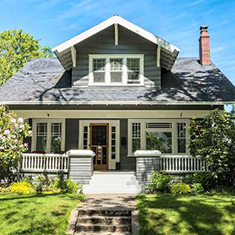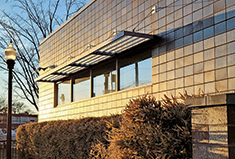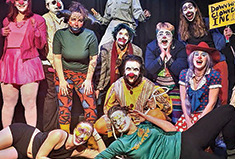A Hundred Years of Ferndale Homes
By Lisa Howard
FROM FARMHOUSES IN ITS EARLY DAYS TO CHIC CONTAINER HOMES NOW, FERNDALE HAS SEEN MANY CHANGES in home styles over the years. “Ferndale was initially the bedroom community for the Henry Ford plant in Highland Park,” says Janis Froggatt, president of the Ferndale Historical Society and a resident of the city since 1972. The plant was only two miles away and a streetcar ran up and down Woodward, making it easy for workers to get to their jobs. “From 1924 to 1926, a lot of houses went up, especially on the west side of Woodward,” Janis adds. “Those were the big years.” Then in 1927, after ten years of being a village, Ferndale became a city.
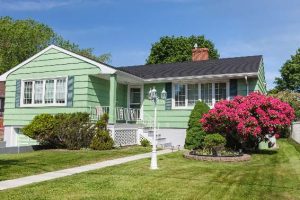 The 1950s saw a boom in bungalow-building on the east side of Ferndale, largely in response to soldiers who had returned from World War II needing housing. In that same decade, Ferndale made the Guinness Book of World Records for having more kids per capita than any other city of its size in the country. The baby boomers had arrived! At its peak, the school system included 13 schools; high schoolers had to attend in two shifts because there were so many kids.
The 1950s saw a boom in bungalow-building on the east side of Ferndale, largely in response to soldiers who had returned from World War II needing housing. In that same decade, Ferndale made the Guinness Book of World Records for having more kids per capita than any other city of its size in the country. The baby boomers had arrived! At its peak, the school system included 13 schools; high schoolers had to attend in two shifts because there were so many kids.
Generations used to stay in Ferndale, Janis says, but that trend has shifted drastically — the vast majority of homes in the city are bungalows, and now even native Ferndalians often want something bigger. Still, some new buyers are moving in and rehabbing the bungalows, and a few larger craftsman style bungalows are scattered throughout the city, particularly in the Drayton area west of Woodward. (That neighborhood boasts bigger homes originally built for doctors and professionals.)
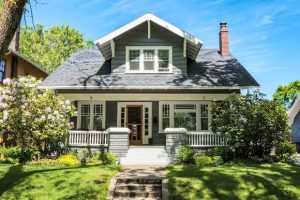
A dozen or so historical kit homes are sprinkled into the mix, too. “If you go into your basement and look up and see a number stamped into the floor joist, you have a kit home,” says Janis. “Or if you have built-in cabinets between the kitchen and living room, see if there’s a number stamped there.”
ECHOES OF THE PAST CAN BE SEEN in other ways, too — for example, some houses west of Woodward don’t have driveways even though they have garages. That’s because residents originally accessed their garages via now-vanished alleys that ran behind the houses.
The median on Woodward is a remnant of streetcars that zipped passengers along the street. Post- streetcar, the area was paved over and made into parking lots from roughly a block north of Nine Mile to a block south of Nine Mile, but then the State of Michigan decreed that the positioning of the lots made them dangerous and the City had to get rid of them. (Wyandotte was the only other city along the corridor to have center-of-the-road parking lots.)
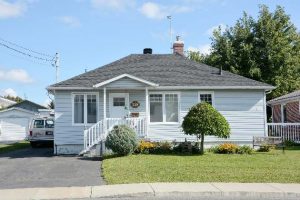 Perhaps the quirkiest homes in Ferndale, though, are the ones that were originally model homes at a lumberyard. In the 1920s, timber was a roaring industry in the Upper Peninsula and lumber was copious. People could go to the bank and get a mortgage, then go to a lumberyard to buy lumber to build their own home (or pay someone else to build it for them). One lumberyard in the area had 12 model homes on its lot to showcase the possibilities. When the timber era ended, the homes were disassembled by the bank, put onto trucks, and rebuilt in Ferndale. The last of those homes are clustered near the cemetery.
Perhaps the quirkiest homes in Ferndale, though, are the ones that were originally model homes at a lumberyard. In the 1920s, timber was a roaring industry in the Upper Peninsula and lumber was copious. People could go to the bank and get a mortgage, then go to a lumberyard to buy lumber to build their own home (or pay someone else to build it for them). One lumberyard in the area had 12 model homes on its lot to showcase the possibilities. When the timber era ended, the homes were disassembled by the bank, put onto trucks, and rebuilt in Ferndale. The last of those homes are clustered near the cemetery.
NOW, AS FERNDALE NEARS ITS 100TH ANNIVERSARY, it continues to be a bustling city where residents receive beautification awards for their noteworthy homes. You could say the main home style continues to be “proud resident.”

